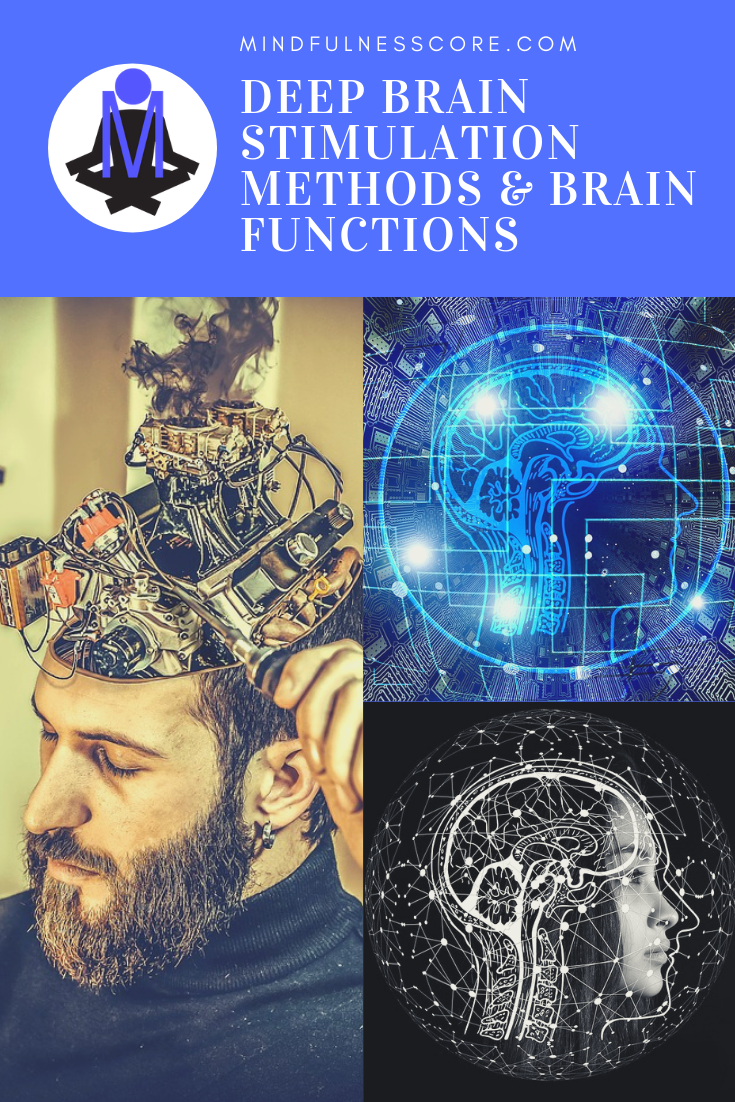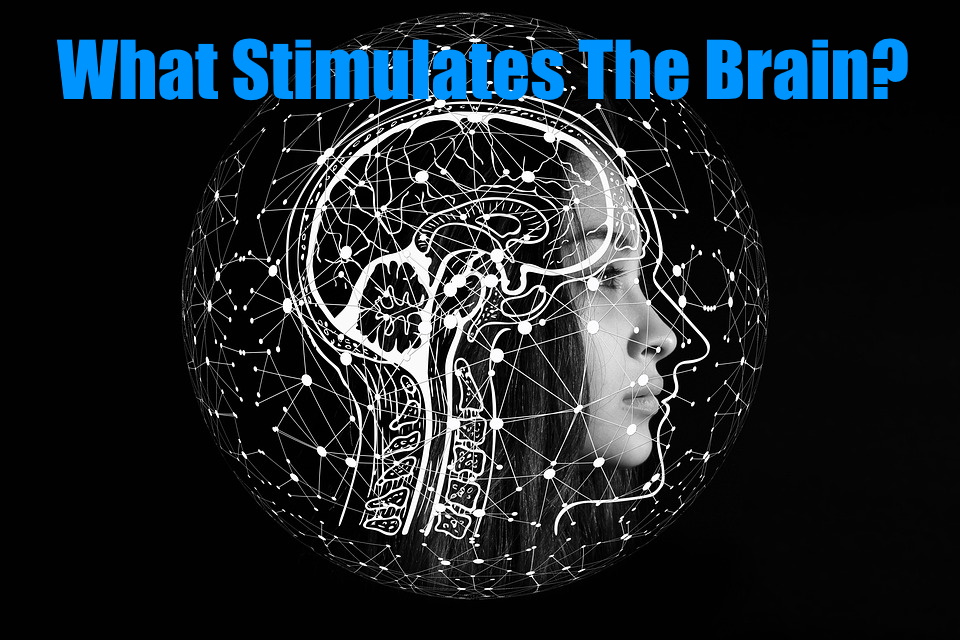Deep Brain Stimulation Non-Invasive Methods & Left vs Right Brain Functions

If there is one thing that we know for sure about the Neurobiological disorders, it’s that such illnesses are not convenient to treat. Be it Alzheimer’s disease or Parkinson’s, with their basis rooted in neurobiology, the treatment options are usually not plenty for the patient. This is perhaps one of the primary reasons why health professionals emphasize on focusing their efforts to minimizing the symptoms and letting the patients enjoy the best possible quality of life with the illness. However, this shouldn’t come as a disappointment since the modern medical procedures help a great deal in somewhat maintaining the quality of life for the patients who suffer from such an adverse, potentially incurable disorder.
While it may be a gross oversimplification of the disorder, but the neurobiological illnesses such as that of Alzheimer’s or Parkinson’s are characterized by the malfunctioning electrical signals being generated or transmitted from the central processing unit of the human body; the brain. More often than not, patients or the caretakers choose to avoid the medical procedures which can help alleviate the symptoms of such neurobiological disorders since such procedures are known to be invasive in nature. After all, who would prefer to have his skull opened for a health professional to dive into his brain in an attempt to resolve the neurobiological disorders? Even in the case of the health professionals, invasive procedures are not the first priority owing to the delicacy and precision required. When it’s an organ as crucial as the human brain on the line, even the trained professionals may find their confidence shaking from time to time.
Such are the concerns which make the neurobiological research an up and coming niche for healthcare research. There is an enormous room for improvement with a lot that has not been explored yet or understood properly. But think about it, wouldn’t be amazing if the researchers finally managed to develop the non-invasive procedures to stimulate the brain activity that helps with minimizing the symptoms of neurobiological disorders? Well, the good news is that the milestone has finally been achieved.
Deep Brain Stimulation – The Traditional Approach
Deep brain stimulation (DBS) is not[restrict] a new concept for the world of neurobiology. It has been around for as long as more than two decades and has been a prominent surgical technique that aims at alleviating the symptoms of neurobiological disorders such as that of Parkinson’s. DBS makes use of the ultra-thin wire electrodes that are implanted into the specific sites of the brain. Owing to the primary role of these electrodes in the generation of electrical signals, they are commonly referred to as the brain pacemakers. The electrical pulses generated with the help of the implanted device are focused at the subthalamic nucleus, a specialized structure that is located towards the brain center. These electrical pulses are known to be highly effective in minimizing many of the physical symptoms that are commonly associated with Parkinson’s disease such as that of muscle rigidity and tremors which lead to slowed movements of the joints.
The Risks Involved
While DBS is generally considered to be fairly safe, however, as with any other surgical procedure, there are a few risks involved. To begin with, the whole idea of it being a highly invasive procedure is scary. Imagine small holes being drilled into your skull so that the tiny electrodes could be implanted into your brain. The potential risks involved with such an invasive procedure include excessive bleeding on the inside of the brain, stroke, or an incident of a mild to severe infection at the very least. Moreover, if the electrodes are required to be implanted for a longer period of time, there is a probability of dislocation of the electrodes over time. In such an event, reports of excessive swelling at the site used for implantation of the device have been common. We hate to be the bearer of the bad news but another major risk involved with invasive deep brain stimulation involves the battery that serves the purposes of powering the electrodes. Owing to its small size, this battery is generally concealed into the chest just beneath its thick skin. However, there is a risk of erosion involved with this battery in which case complications may arise that require further invasive procedures to rectify them.
Non-Invasive Deep Brain Stimulation – An Introduction
All thanks to the dedicated team of researchers at the Massachusetts Institute of Technology, the world has finally been introduced to a non-invasive procedure for deep brain stimulation. Instead of implanting the electrodes, such a procedure is envisioned to use multiple electric fields. Not only are these fields applicable without the need of drilling holes in the skull and accessing the brain itself, but it has also been shown to be effective in stimulating the deep brain structures without having to disrupt the normal operations of other surrounding tissues. Experimentation has been performed on the live mice and is likely to be tested with human subjects as the research progresses to the next phase. The best part of the non-invasive deep brain stimulation is that it is capable of achieving motor cortex stimulation that can help a great deal in optimizing movements and minimizing the delayed or involuntary response of the muscles and joints.
The procedure that has been termed as “Temporal Interference” works on a simple principle. It is a common understanding that a frequency of 1000 Hertz or above is beyond the normal range of reception for the neurons. Electric fields with a frequency of over 1000 Hertz, therefore, has the potential to avoid disruptions in the neuronal activity while passing through the brain. Upon application of two electric fields of high frequency, especially when the difference between the two frequencies is small and corresponds to the range that neurons are capable of responding to, however, the interaction of these two fields can give rise to an additional electric field that is known as the Envelope Field. This electric field serves the role of stimulating only the required cells.
Let’s try to understand this phenomenon with the help of an example. If two electric fields are applied to the brain with frequencies of 2000 Hertz and 2010 Hertz respectively, at the spot where these two electric fields will interact, an envelope field of 10 Hertz will be produced. Considering that the frequency of 10 Hertz is respond-able for the neurons, the nerve cells which lie underneath this envelope field will be stimulated while all of the neurons which are located above the envelope field and are exposed to either of the two high frequencies (2000 Hz and 2010 Hz) will be prevented from getting excited. In simpler words, the neurons that are exposed to one of the high frequencies won’t be stimulated while the ones exposed to both will be excited. This is the very basis on which non-invasive deep brain stimulation or Temporal Interference is premised on.
The research was initiated with the computer-simulated models and was later switched to the anesthetized mice models. The temporal lobe, specifically the hippocampus region was the primary aim for the electrodes. Hippocampus is the component of the brain that plays an imperative role in crucial processes like memory and learning. To begin with, automated patch clamping was used to identify if the cells under the envelope electric field are being excited. To take a step further, the mice’s brains were dissected to study the c-Fos activity. For a more visualized understanding, fluorescently-labeled antibodies were used. The c-Fos is known as the immediate early gene that is instantly expressed as soon as the neurons fire. Upon confirming that the c-Fos gene was indeed being expressed only in the targeted hippocampal region while expression in the other components of the brain including cerebral cortex as well as the remaining regions of the hippocampus was dormant, it was easier to conclude that Temporal Interference is a technique that is effective in stimulating the nerve cells under the envelope electric field while sidestepping a disruption in the rest of the neuronal activity. In other words, this technique is useful in selectively stimulating the parts of the brain while avoiding disruptions in the other parts in the meantime.
Testing For The Safety Of Temporal Interference
It goes without saying that the safety of such a newly developed non-invasive deep brain stimulation procedure was the next major concern for the researchers. In order to test for the safety of the procedure, the same experiment was repeated but with awake mice subjects this time. The death of the nerve cells of the brain is known to stimulate the production of specific proteins. Therefore, fluorescent antibodies were used which were known to bind specifically to such proteins. Furthermore, it was also essential to use the thermometer probes in order to identify if any abrupt or drastic temperature variation is being caused inside the brain due to the application of these electric fields. The antibodies, as well as the thermometer probes, confirmed the absence of abnormal temperature variations while the density of neurons remained the same with no amount of unusual death of the cells in the targeted region. Lastly, the mice were also tested for seizures since the invasive deep brain stimulation is known to have such a complication. Once it was confirmed that neither during the application nor after the electric fields were applied, did the mice suffer from an episode of seizure, it was concluded with some confidence that the technique non-invasive DBS is not only effective in achieving the goal but is also comparatively safer as compared to its invasive cousin.
Extending The Research Further
Considering the positive outcomes of the Temporal Interference, the researchers decided to take a step further and repeat the experiment while keeping the primary cortex as the target region of the brain. Since the left motor cortex region controls the movements of the right paws, it was expected that stimulating this region will manifest itself as forepaw movements. Similarly, the other regions of the primary cortex have been linked via substantial research to the movement of the specific whiskers as well as that of ears. Stimulating such regions, therefore, was expected to cause a twitch in these parts of the animal’s body. In both cases, the results were aligned with the anticipations that further strengthened the potential role of the non-invasive procedure in alleviating the symptoms of neurobiological disorders such as that of Parkinson’s.
The good news is that trials have already begun with human subjects. Being in the early phases, normal, healthy volunteers are usually recruited for research and the scope is confined to exploration as to whether or not the technique serves the purpose of targeted stimulation of the brain regions.
Conclusion
The above-mentioned information clearly vouches for the effectiveness and safety of Temporal Interference. It is evident that there are major benefits of opting for this non-invasive technique over the traditional, invasive, surgical deep brain stimulation as well as the other non-invasive techniques that are currently available to accomplish the same goal. Such techniques include of Transcranial direct current stimulation (tDCS) and Transcranial magnetic stimulation (TMS). While the aforementioned two non-invasive techniques are effective in accomplishing the stimulation of deep brain regions, the activation is not selective or targeted since the underlying or surrounding regions are also excited through the process. This has been shown to improve the chances of unwanted and sometimes severe side effects.
As conclusion, with non-invasive deep brain stimulation via Temporal Interference, the deeply rooted regions of the brain responsible for causing the neurobiological complications such as that of depression, Alzheimer’s, PTSD, and Parkinson’s, etc. can be selectively stimulated which open new horizons for the potential treatment options in the years to come. All in all, Temporal Interference looks promising for patients of neurobiological disorders. In the upcoming years, perhaps they wouldn’t have to submit to the illnesses and make-do with a compromise in terms of the quality of life at all.[/restrict]

